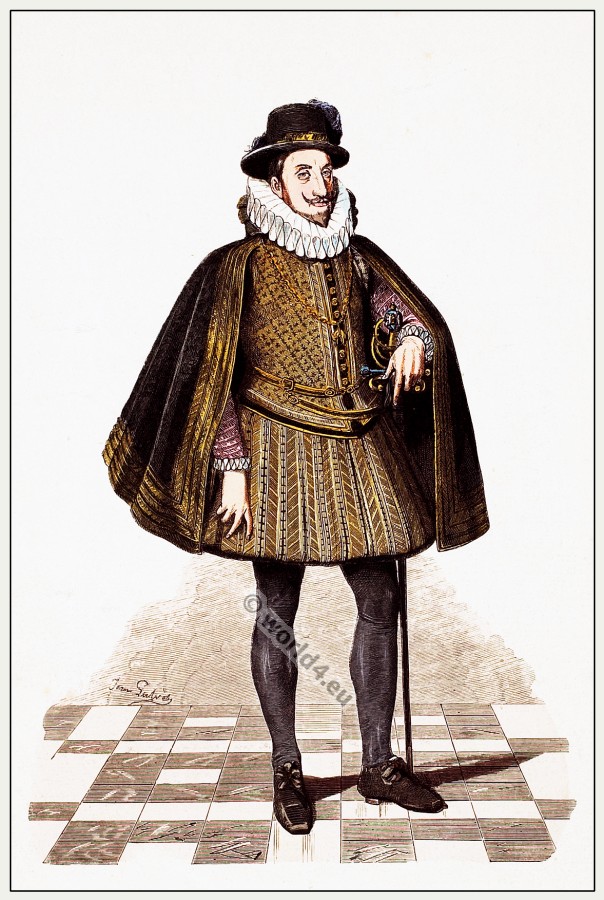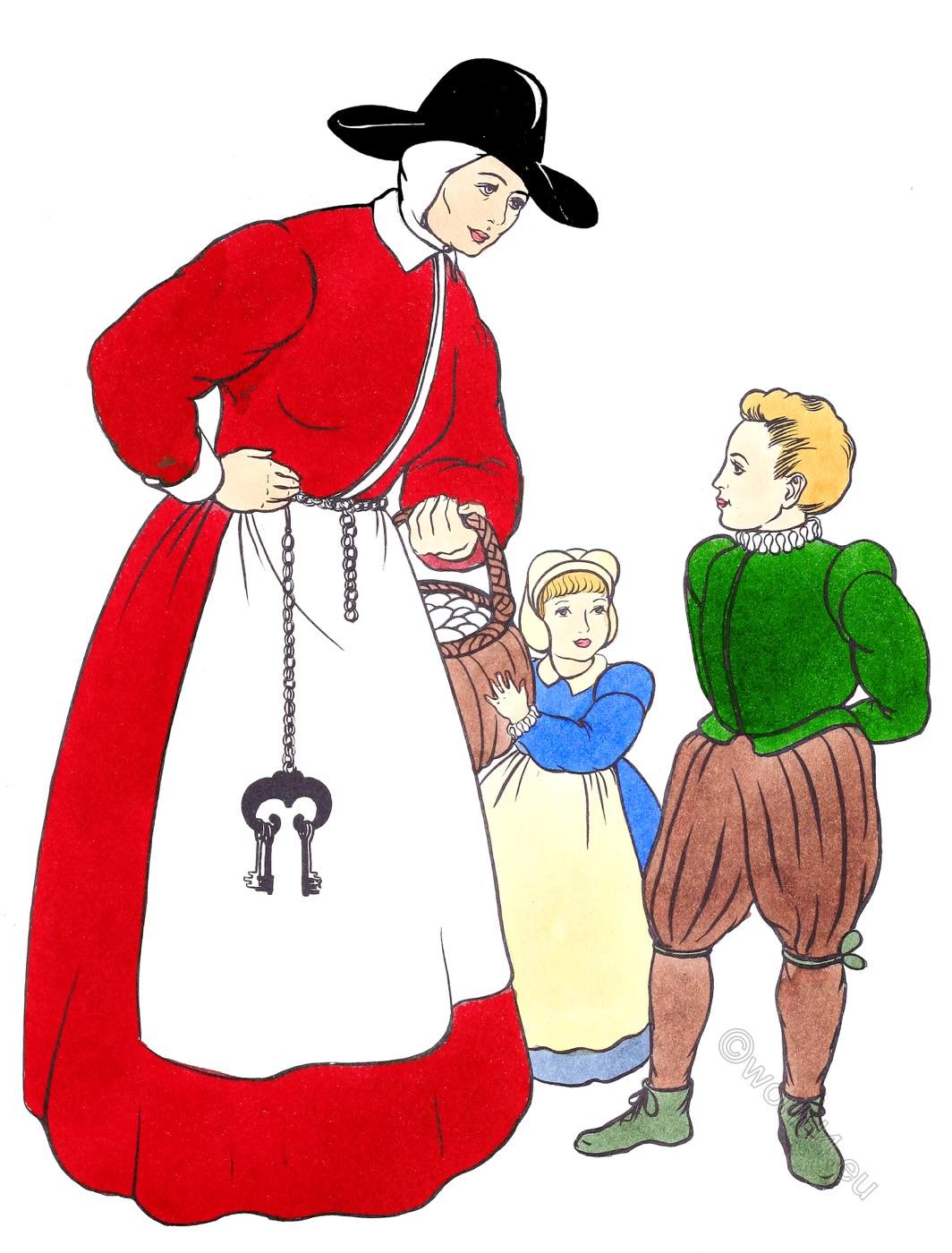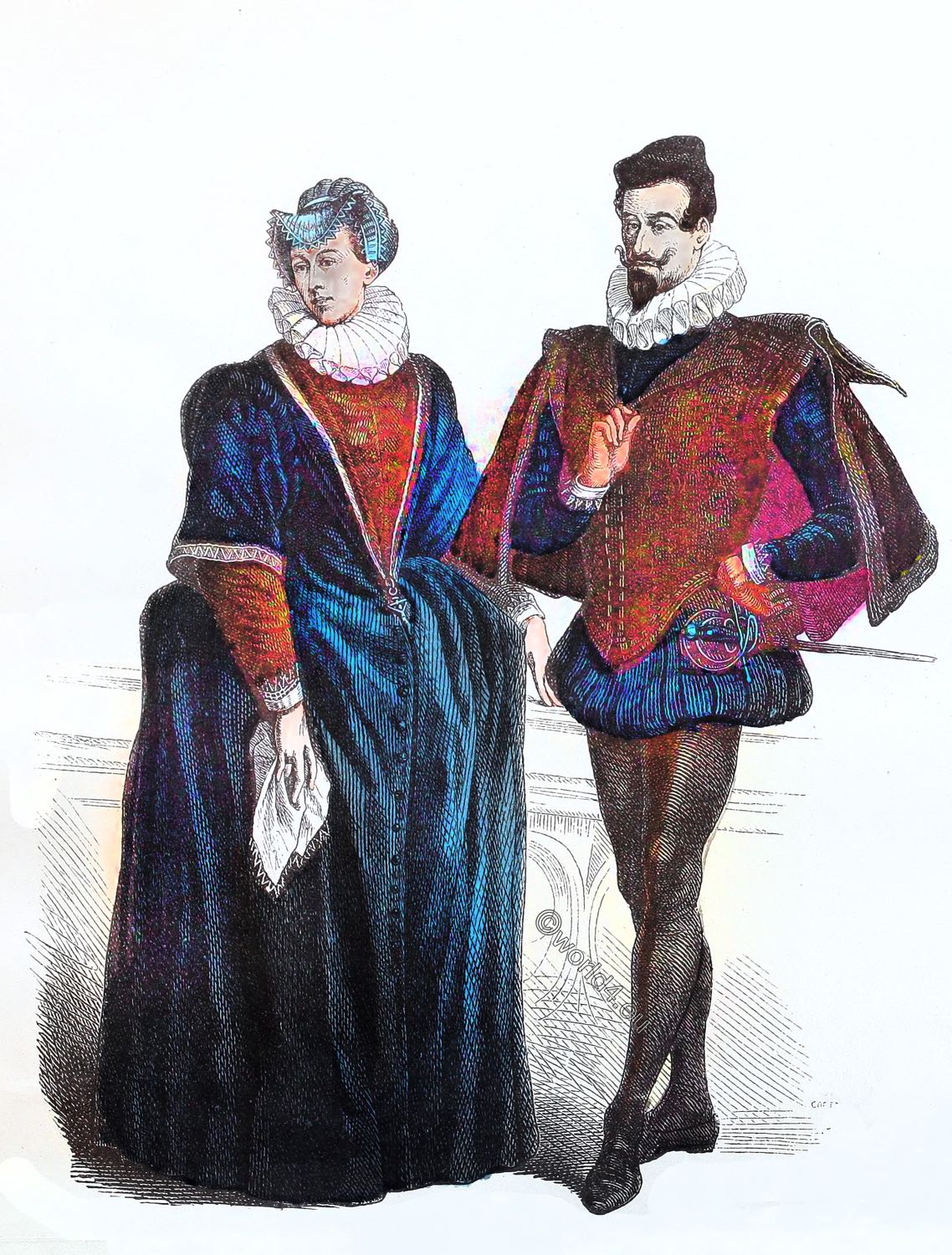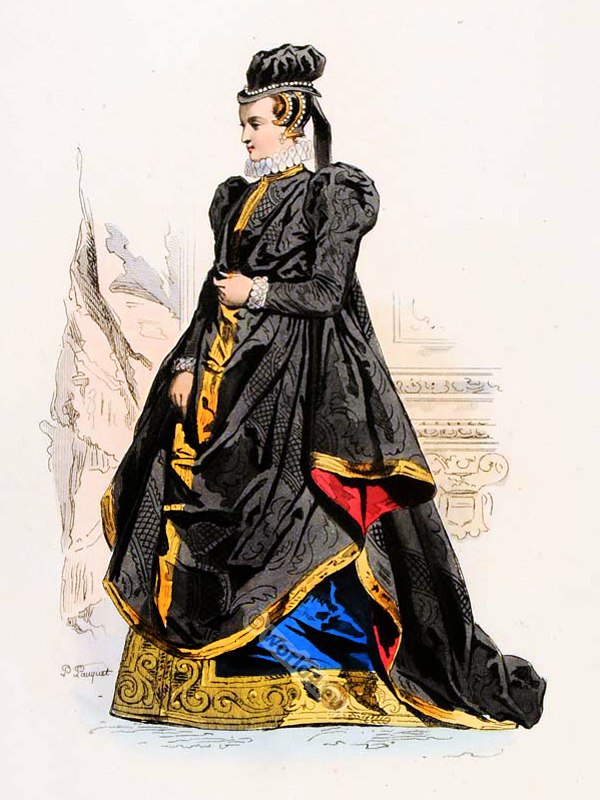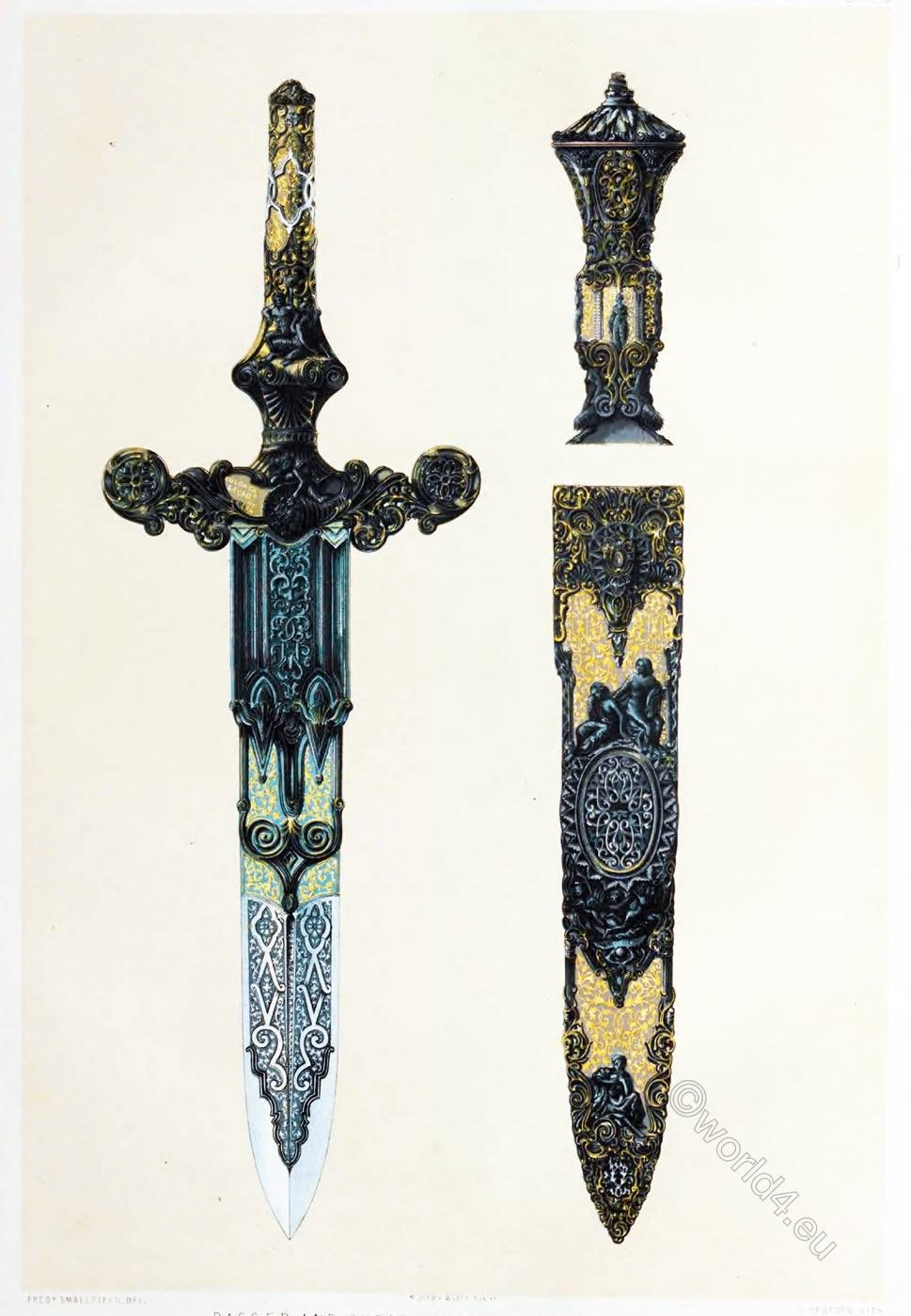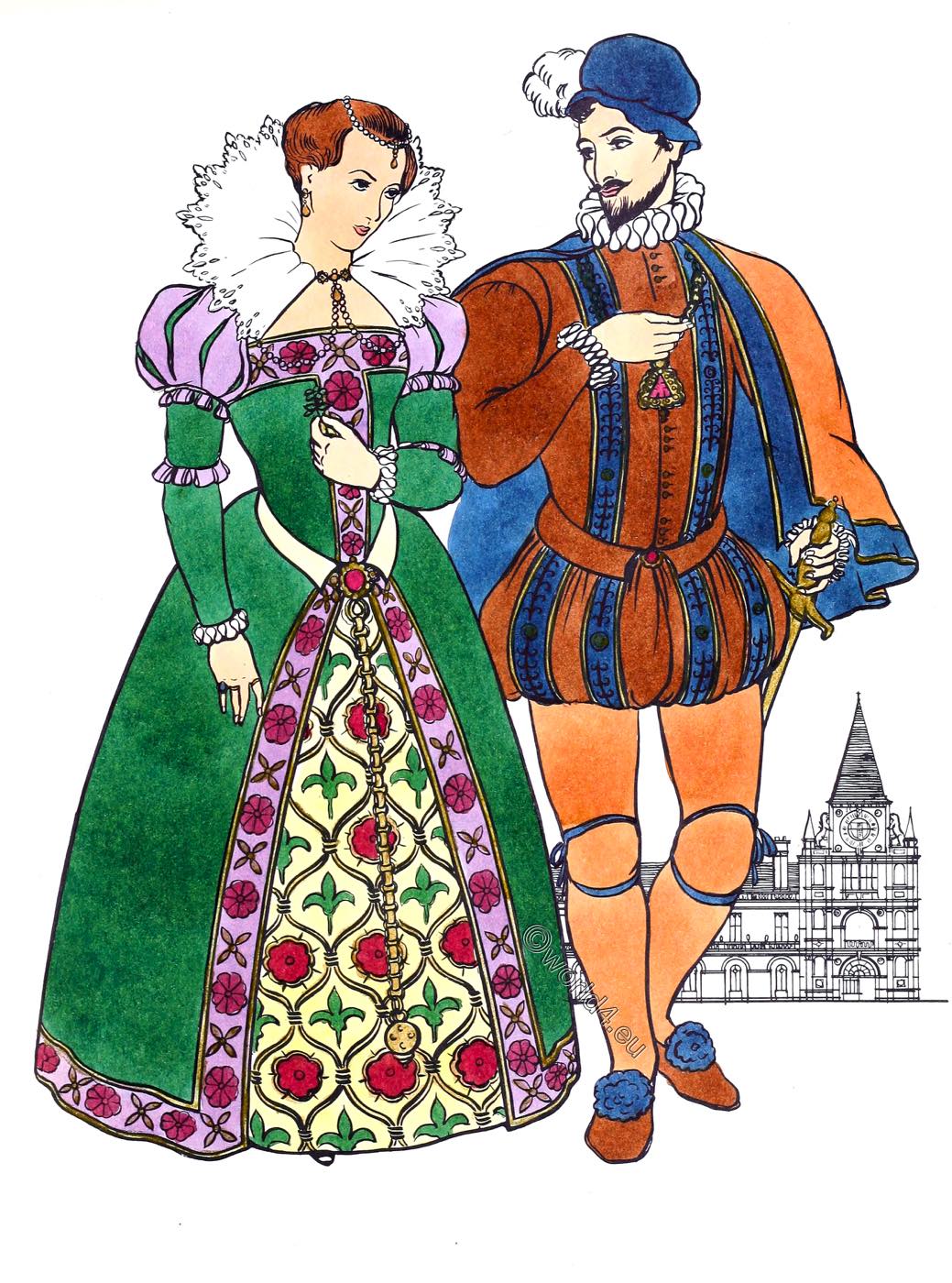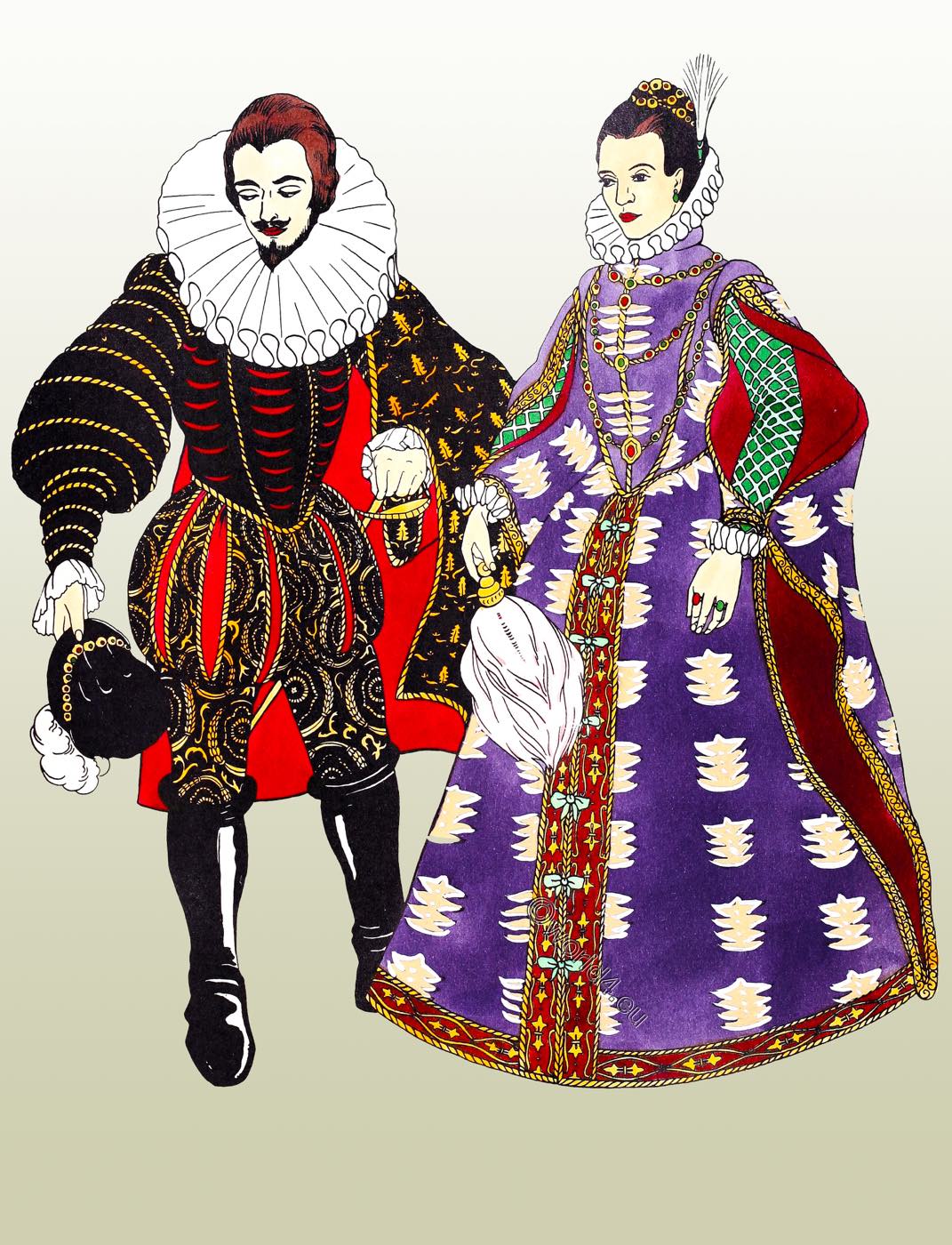
ELIZABETHAN – 1550 to 1620.
Couple wearing typical ensembles of the Elizabethan era.
PLATE NO. 42
The man and woman shown here are wearing typical ensembles of the Elizabethan era. The man is somewhat of a dandy as can be seen from his large cart-wheel ruff, the elaborate gold embroidery, and ths bishop’s or leg-o-mutton sleeve on his doublet. Let us examine his outfit, garment by garment.
His doublet has been padded so that it curves out sleek and full like a pigeon’s breast. Note the row of gold buttons down the front and the crescent slasnes showing a red lining. The collar of the doublet fits up tightly under his ears and is hidden by his large linen ruff. Where the sleeve joins the doublet is a roll, shaped like a crescent, and the sleeve has been stiffened and perhaps padded to fit the way it does. Notice that his wrists are trimmed with a soft ruffle, probably a part of his shirt sleeve.
His hose are in two sections. From the waist to mid-thigh are the full, round hose adorned with gold-embroidered velvet “panes” that reveal a red underlining, attached to these are what the Elizabethans called “canions.” They fit the leg tightly to the knee and are sort of an additional short trouser. His legs are protected by high, soft leather boots and he is carrying in his right hand a soft bonnet, typically Elizabethan with its gathered, high crown, jeweled band, and ostrich plume. The stiff, rather long (in this case) cape was a permanent feature of an Elizabethan man’s outfit almost like a suit-coat today. His rather long hair and pointed beard also are characteristic of the times. His entire costume, very probably, is of black velvet (even his hat), gold braid, and embroidery. The red lining shown might be satin or silk. The cape, hose, and doublet are inner-lined with “fustian,” a heavy buckram, to give it stiffness.
The most characteristic part of the woman’s outfit is her skirt. She is wearing a Spanish farthingale — a hooped petticoat held out by a series of hoops forming a bell-shaped frame over which her skirt was worn. Notice its elaborate trimming with braid, bows of ribbons, and the all-over pattern. Her bodice is made exactly like the man’s, though it may be buttoned up the back. Her ruff, collar, and shoulder puffs imitate her husband’s almost exactly. Her sleeves are a holdover of the angel-sleeve of an earlier day. Split from shoulder to cuff they are broached at the wrist and fall to the floor revealing the green sleeve of an under gown.
Notice how her coiffure approximates the man’s. She has combed it high off her face in a pompadour and trimmed it with a plume and some jewels. The ostrich feather fan was very copular as was all the heavy jewelry, rich silks, satins, and velvets. Notice that her wrists are trimmed with two small ruffs imitating the small ruff at her neck.
Source: Museum Extension Project. History of Costume.
Related
Discover more from World4 Costume Culture History
Subscribe to get the latest posts sent to your email.

